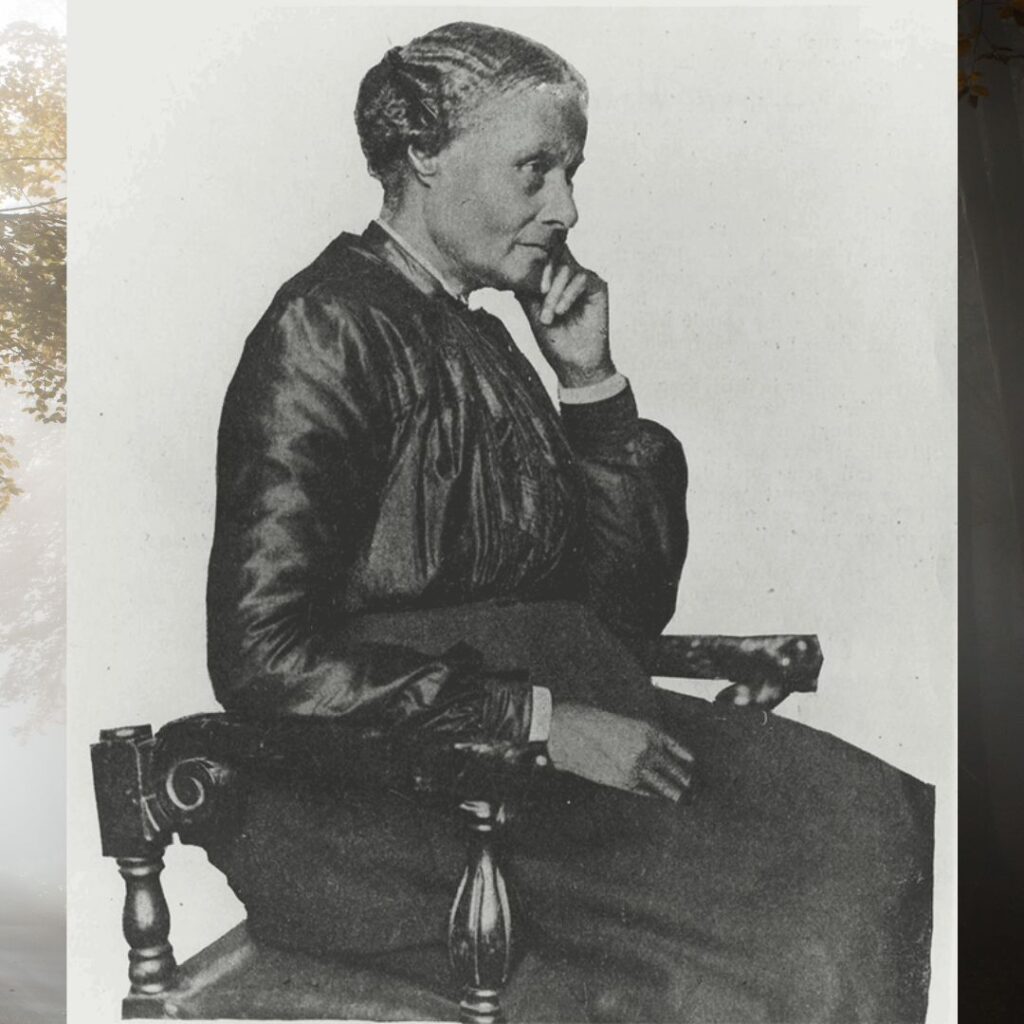African American History, California History, People
Mary Ellen Pleasant
On August 19, Mary Ellen Pleasant was born. Her birth year is disputed, and while most sources say 1814, her grave in Napa denotes 1812. She lived into her 90s, and passed away on January 4, 1904. Here’s a brief biography of this incredible woman.
Napa had a tenuous connection to Mary Ellen Pleasant, known as “the Mother of Civil Rights in California.” She first gained notoriety when she harbored Archy Lee, a runaway slave in San Francisco. She was often called “Mammy,” a nickname she hated; in a 1901 interview she said, “Listen: I don’t like to be called mammy by everybody. Put that down. I’m not mammy to everybody in California.”[1] Little is known for certain about Pleasant, and much that is put forth as fact is based on speculation. Over the years she has been linked with prostitution, orgies, Voodoo hexes, blackmail, and the manipulation of her wealthy white patrons, but she was also famous for her fight for civil rights in San Francisco.
Mary Ellen Pleasant began life as a slave, but was freed as a child and raised by Quaker abolitionists. She and her first husband worked on the Underground Railroad, work she continued with her second husband until she was driven away by slave owners. In San Francisco she regularly employed ex-slaves to work in her businesses, but went back to the East Coast to help John Brown attempt to free the slaves in Harper’s Ferry, West Virginia. After returning to San Francisco in 1863, “she gained prominence first as a cook, later by her work in behalf of colored slaves and finally as a ruler of the destinies of several wealthy families.”[2]
In 1866, Pleasant, Charlotte Brown, and Emma J. Turner were made to disembark from a streetcar because of their race; within two years Pleasant had won her lawsuit, Pleasant v. North Beach & Mission Railroad Company, and public conveyances in San Francisco were desegregated.[3] It took almost thirty years of near constant suits before a state-wide anti-discrimination law was passed. Pleasant died destitute in 1904, but her friend Olive Sherwood of Napa had her interred in the Sherwood family plot in Tulocay Cemetery.
Pleasant was in good company with Black San Franciscans like Bridget Mason and Charlotte Brown, all of whom fought for racial equality in California’s public policies and legal system. Pleasant, Mason, Brown, and other Black women defied the stereotypes of women of color. In 1860, not only were 11 percent of African Americans in California women, but 74 percent were literate.[4]
[Ed. note: this article is excerpted in part from the master’s thesis “There Are No Black People in Napa”: A History of African Americans in Napa County by Alexandria Brown.]
[Ed. note (2023): A previous version of this article used a photograph which has since been determined not to be Mary Ellen Pleasant. It has been changed to a more widely accepted image of her to reduce confusion.]
[1] Lerone Bennett Jr., “The Mystery of Mary Ellen Pleasant,” Ebony, (April 1979): 90, accessed 8 December 2013 from http://www.ebscohost.com.
[2] “Aged ‘Mammy’ Pleasant Now Reposes in Death,” San Francisco Call 95, no. 43 (12 January 1904), accessed 10 December 2013 from http://cdnc.ucr.edu.
[3] Steve Crowe, “Mary Ellen Pleasant: Unsung Heroine,” New Crisis 106, issue 1 (Jan/Feb 1999): 35, http://www.ebscohost.com.
[4] Willi Coleman, “African American Women and Community Development in California, 1848-1900,” in Seeking El Dorado: African Americans in California, eds. Lawrence B. De Graaf, Kevin Mulroy, and Quintard Taylor (Seattle: University of Washington Press, 2001): 102-103.


